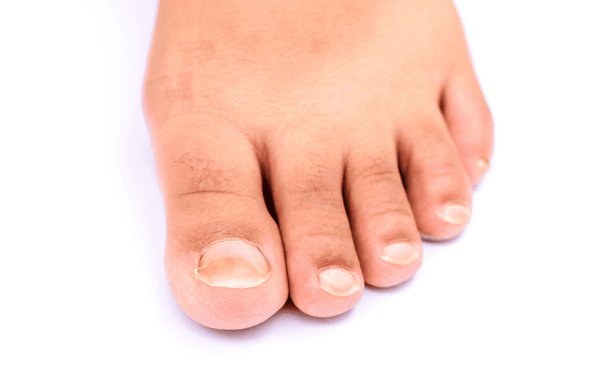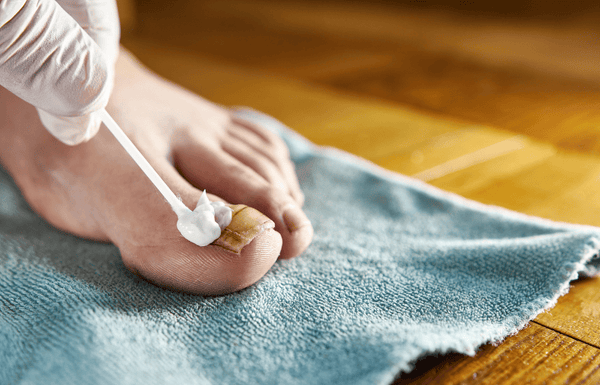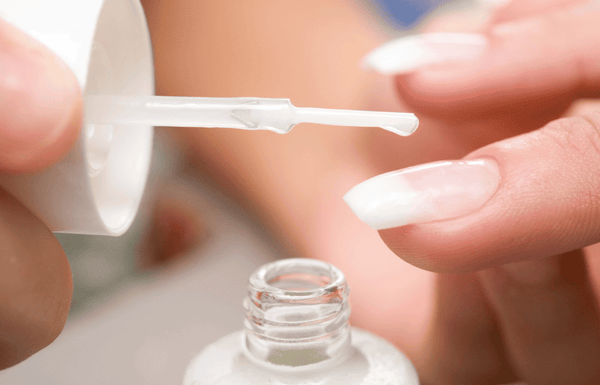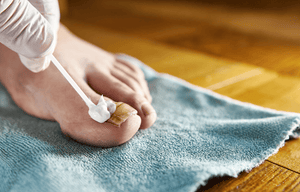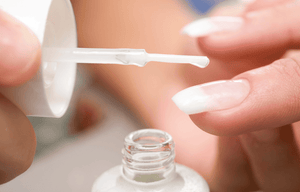
While less commonly recognized than household-named foot fungus like athlete’s foot, fungal infections on the hands are far from rare.
They can be incredibly persistent and uncomfortable without proper treatment. These infections make your hands itchy and dry with an irritating fungal rash that just won't go away.
The challenge? They frequently masquerade as other skin conditions, so countless people unwittingly delay diagnosis, treatment, and much-needed relief.
When a fungal infection on the hands is misidentified or left untreated, it can spread and get worse. It might even lead to unnecessary or incorrect treatments that make it even worse.
We’ll explain why these hand skin infections are so often overlooked, what they look like, and how to tell if it's eczema or a fungal infection, so you can get the right care.
What Is a Fungal Infection of the Hands?
Medically speaking, a fungal infection of the hands is known as tinea manuum, dermatophyte infection affecting skin on the palms and fingers, and sometimes between the fingers.
These microscopic fungi thrive in warm, moist environments, and they feed on keratin, a protein found in your skin, hair, and nails.
How do these fungi find their way to your hands? There are several common pathways:
- Direct Contact: Touching infected surfaces, like gym equipment, shared towels, or doorknobs in public places where fungi might linger.
- Person-to-Person Spread: Shaking hands with someone who has an active fungal infection.
- Self-Spread aka Two Feet–One Hand Syndrome: Many who develop tinea manuum already have athlete’s foot or toenail fungus and inadvertently transfer the fungi from their feet to their hands, causing a fungal infection on one hand while both feet are affected.
What It Looks Like
You might notice dry, scaly patches on your palms or fingers, often accompanied by redness and itch. Sometimes, small blisters appear along the edges of the rash. The skin might also get thickened or cracked, especially in palm creases or around knuckles.
The tricky part is that these symptoms are not unique to fungal infections. In fact, tinea manuum can resemble these common skin conditions:
- Eczema (Dermatitis): The most common impersonator, eczema on the hands often presents with dry, itchy, red, and sometimes weeping or crusting patches. It can be difficult to distinguish from a fungal infection without proper testing.
- Psoriasis: This chronic autoimmune condition causes thick, silvery scales on red patches, which can also affect the hands.
- Contact Dermatitis: An allergic reaction from culprits like soap, jewelry, or chemicals can mimic a fungal infection of the hands.
Why It’s Often Misdiagnosed
This cycle of misdiagnosis and inappropriate self-treatment can prolong suffering and allow the infection to become more entrenched. As mentioned, the visual presentation of tinea manuum can be nearly identical to eczema, psoriasis, or contact dermatitis.
Without specific diagnostic tests, it’s easy to jump to the wrong conclusion based solely on appearance.
There's also a general lack of awareness that fungal infections are a significant cause of hand rashes. Feet are the usual suspects, so hands are often overlooked.
Many skin conditions, like eczema or contact dermatitis, are treated with topical steroid creams to reduce inflammation and itching. If a fungal infection is misdiagnosed as one of these conditions, steroid cream can make the fungal infection worse.
Steroids suppress the immune response in the skin, allowing the fungi to multiply unchecked. This phenomenon is so common it has its own name: tinea incognito, where the typical appearance of the fungal infection is altered or masked by steroid use.
On top of that, many automatically reach for common moisturizers or over-the-counter hydrocortisone creams that may offer temporary relief, but do nothing to address the underlying fungal problem.
How to Differentiate Fungal Infections From Other Conditions
1. Asymmetry
Fungal infections on the hands typically affect only one hand, or one hand much more severely than the other. Eczema, especially chronic hand eczema, usually affects both hands symmetrically. This "one hand, two feet" pattern is a strong indicator of tinea manuum.
2. Defined Border
While not always present, a fungal rash often has a more defined, slightly raised, and sometimes scaly border, particularly along the edges. Eczema tends to have a less distinct border.
3. Scaling in the Creases or on the Palm
Fungal infections frequently cause scaling and dryness into the natural creases of the palm, an area less commonly affected by eczema in the same way. The skin on the entire palm might appear dry and flour-like.
4. History of Athlete’s Foot or Nail Fungus
If you have a history of athlete's foot or toenail fungus, or currently have an active infection on your feet or nails, the likelihood of your hand rash being fungal significantly increases.
How It’s Diagnosed
To confirm a suspected fungal infection, a doctor will typically use diagnostic tools, including skin scrapings and microscopy where a sample of skin is gently scraped from the area and examined under a microscope.
Sometimes, a skin sample gets sent to a lab to grow the fungus in a culture. This takes longer but can identify the specific type of fungus, which can be helpful for guiding treatment.
Getting the Right Treatment
Remember, steroid creams can worsen fungal infections and delay healing. If you have been using a steroid cream on a rash that hasn't improved, or has gotten worse, get a professional evaluation.
For a solution that actually works, doctor-recommended antifungal treatments for the hands include:
- Topical Antifungals: For milder or localized infections, antifungal creams, gels, or solutions applied directly to the skin are often sufficient. These typically contain active ingredients like terbinafine, clotrimazole, or miconazole. Consistent application for several weeks, even after symptoms improve, is necessary to fully eradicate the fungus.
- Oral Antifungals: For more widespread, severe, or stubborn infections, or when topical treatments have failed, your doctor might prescribe oral antifungal medications like terbinafine or itraconazole. These work systemically throughout your body to combat the infection and usually require a shorter course, but they may have more side effects.
Treatment typically takes several weeks, sometimes longer for more severe cases. While symptoms might improve quickly, you must complete the full course of medication prescribed by your doctor to prevent recurrence.
Prevention Tips
Keep Hands Clean and Dry
Fungi love moisture. Wash your hands regularly with soap and water, especially after touching your feet or public surfaces, and dry them thoroughly, paying attention to the spaces between your fingers.
Avoid Direct Contact with Infected Surfaces or Untreated Fungal Infections
If you have athlete's foot, treat it diligently to avoid spreading it to your hands. Wear flip-flops in communal showers or locker rooms.
Proper Hygiene
After activities like going to the gym, swimming pool, or gardening, wash your hands promptly.
Complete the Full Course of Treatment
Even if your symptoms disappear, finish all prescribed antifungal medication. Stopping early can leave residual fungi that can quickly multiply again.
Getting Relief From Hand Fungus
Fungal infections on the hands are common but often overlooked because they mimic other skin conditions like eczema.
If you have a hand rash that won’t go away with moisturizers or over-the-counter creams, or if it seems to worsen with steroid use, it is a clear signal to seek medical evaluation.
A correct diagnosis and proper care can clear the infection and prevent it from coming back. If you suspect hand fungus, use our doctor-formulated and recommended Dr. Antifungus soak and spray for targeted relief and healing,
